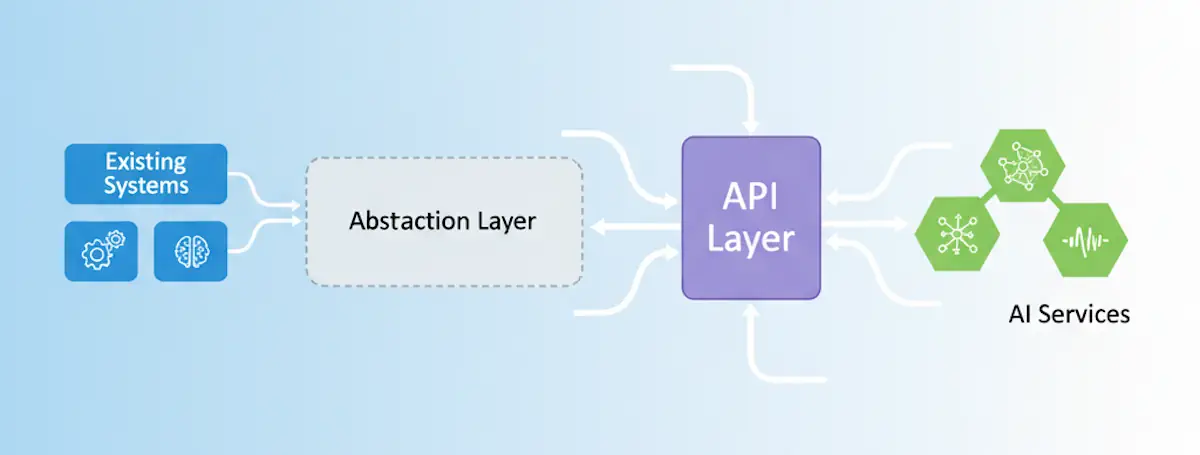Themes Over Terminology
Why semantic debates kill productivity while theme alignment drives results

Your meeting agenda says “Strategic Planning Session.” Two hours later, you’re still debating whether something should be called a “strategy,” a “priority,” or an “initiative.”
Real customer problems wait for solutions. Your engineering team sits idle, or worse, unfocused.
This is the productivity killer plaguing organizations everywhere: the semantic trap.
The Measurement Behind the Madness
Semantic debates aren’t just frustrating—they’re measurably destructive. McKinsey research on organizational decision-making reveals that only 37% of organizations make decisions that are both high quality and fast. Even more telling: just 48% of organizations make decisions quickly at all.
Organizations with strong alignment don’t just outperform competitors—they’re 2.9 times more likely to align decisions with strategy and achieve 6.8 times better execution commitment from stakeholders. These aligned organizations are also twice as likely to see 20%+ financial returns from their decisions.
Marketing calls it “brand positioning” while Sales calls it “value messaging.” Engineering discusses “technical debt” while Product talks about “platform investments.” Leadership debates “strategic initiatives” versus “operational priorities.”
Everyone agrees on the substance but can’t agree on labels.
Shape Checking: Focus on Form, Not Labels
My previous leader connected teams with a mental model of “shape checking.” Instead of arguing about what to call something, focus on whether everyone understands the shape—the actual substance, direction, and intended outcome.
Shape checking asks: “Are we aligned on what this actually looks like in practice?”
- What outcomes are we trying to achieve?
- Who needs to do what differently?
- How will we know if it’s working?
- What resources does it require?
Skip the semantic battles. Examine the characteristics.
The Data on Theme-Based Alignment
Organizations focusing on shared themes rather than terminology achieve measurably better results. Strategic alignment research shows theme-aligned organizations experience:
Faster Decision-Making: The speed difference is dramatic—aligned organizations make decisions at nearly double the rate of their unaligned counterparts.
Better Execution: Teams that understand common themes spend less time interpreting conflicting messages and more time delivering results.
Higher Engagement: Research on organizational alignment demonstrates that employees who understand how their work connects to organizational themes show significantly higher engagement and performance levels.
Building the Strategic Cascade: From Vision to Code
The most powerful alignment happens when your tactical contributors can easily explain how their work ladders up to your highest-level themes. This creates what many call a strategic cascade or Organizational Structure Template (OST)—a clear hierarchy connecting enterprise vision to individual actions.
Here’s the four-level framework:
Level 1: Enterprise Themes
Start with 3-5 clear themes that capture your organizational direction:
- “Know our customers deeply”
- “Deliver exceptional experiences”
- “Build sustainable growth”
Level 2: Strategic Objectives
Connect themes to measurable outcomes:
- “Know our customers deeply” → Increase customer data completeness by 40%
- “Deliver exceptional experiences” → Reduce onboarding time from 14 to 3 days
- “Build sustainable growth” → Achieve 25% annual recurring revenue growth
Level 3: Team Initiatives
Translate objectives into team-level work:
- Customer data platform integration
- Onboarding flow redesign
- Product-led growth experiments
Level 4: Individual Contributions
Make the connection explicit for everyone:
- The developer building authentication: “This supports our growth theme by enabling self-service onboarding”
- The designer creating tutorials: “This delivers exceptional experiences by reducing time-to-value”
- The analyst building dashboards: “This helps us know customers by surfacing behavior patterns”
Strategic Cascade (OST Example)
Better Customer Knowledge
Personalized Experience Strategy
Reduce Onboarding Time
Build Onboarding Checklist
Each level connects to the one above, creating line-of-sight from daily tasks to enterprise strategy
Your developer working on the onboarding checklist can trace their work directly up through the cascade: this checklist supports reducing onboarding time, which enables personalized experiences, which helps us know customers better. No terminology debates required.
Making Shape Checking Stick
Start Meetings with Theme Anchoring. Restate your core themes before strategic discussions. When debates arise, ask: “How does this serve our theme of [X]?”
Create Visual Connections. Use strategy maps or OST diagrams showing how individual work connects to enterprise themes. Make the links explicit and visible.
Practice Translation, Not Correction. When someone uses different terminology, translate: “So when you say ‘customer success initiative,’ you’re talking about our theme of delivering exceptional experiences?”
Measure Connection, Not Compliance. Survey your team: Can they explain how their daily work supports your top-level themes? This matters more than whether they use the “right” words.
Model the Behavior. Leaders must demonstrate focus on substance over semantics. When you catch yourself debating terminology, redirect: “Let’s align on the outcome we’re driving toward.”
The Strategic Art of Saying No
Clear theme alignment makes saying “no” significantly easier. New requests can be evaluated against your strategic cascade: Does this project serve one of our core themes? Does it ladder up through our framework? If not, declining becomes strategic discipline, not arbitrary rejection.
This ability to maintain focus through strategic “no” decisions deserves deeper exploration as organizations struggle with priority proliferation and resource dilution.
The Results Are Measurable
Organizations mastering theme-based alignment achieve:
Decision Speed: Nearly double the decision velocity of unaligned organizations, with clear criteria eliminating endless debate cycles.
Execution Quality: The McKinsey data also shows 6.8 times better stakeholder commitment when everyone understands how their work connects to organizational themes.
Financial Performance: The research confirms twice the likelihood of 20%+ returns from strategic decisions when alignment reduces execution friction.
Team Clarity: Employees who understand theme connections demonstrate higher engagement and can prioritize effectively even in novel situations.
The Two-Hour Test
The next time your team spends more than 15 minutes debating whether something is a strategy, priority, initiative, or objective, stop. Ask: “Regardless of what we call it, are we aligned on what success looks like and what we need to do differently?”
Watch the conversation shift from semantic battles to substantive planning.
Can your team members easily explain how their daily work connects to your enterprise themes? If not, you’re optimizing for compliance instead of results.








